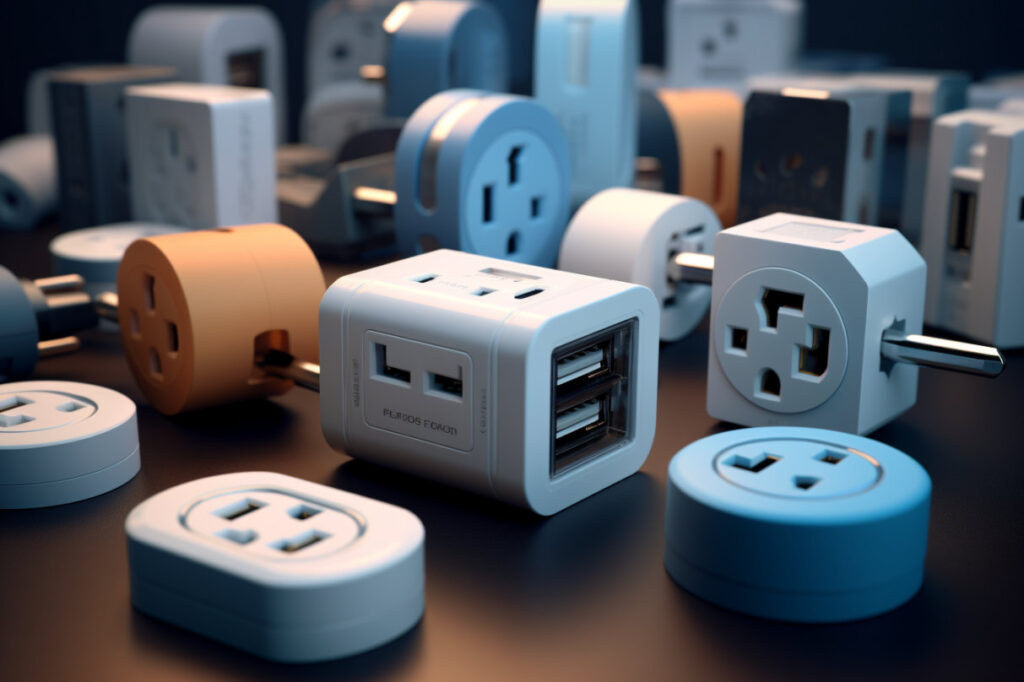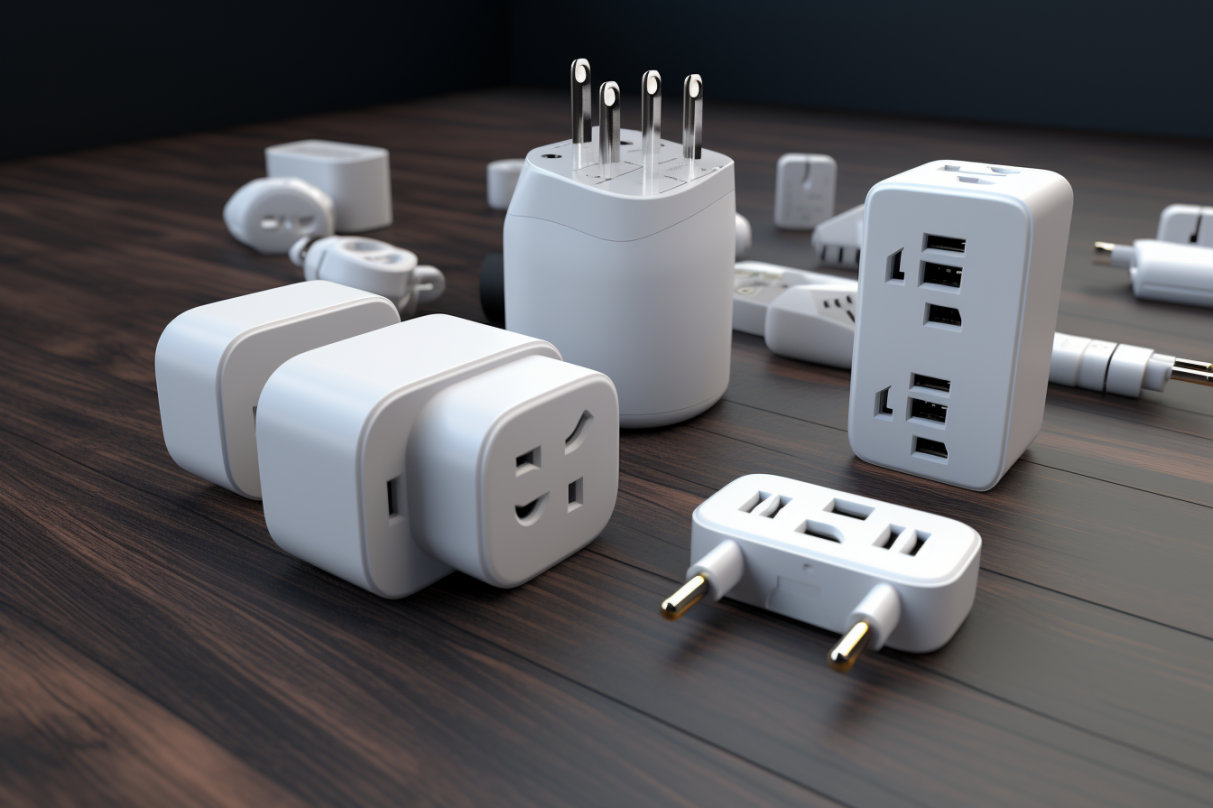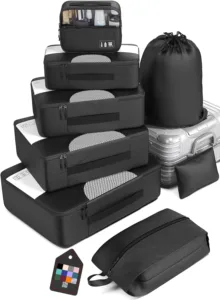If you are planning to go on a cruise, you might be wondering if you need to bring any specific electrical adapters or chargers for your devices. After all, you don’t want to end up with a dead battery, a fried device, or a fire hazard on board.
In this article, I will explain everything you need to know about electrical adapters or chargers for a cruise, including the cruise line policies, the electrical standards and compatibility, the types and features of adapters and chargers, the packing tips and recommendations, and the frequently asked questions. By the end of this article, you will be able to pack your electrical adapters or chargers with confidence and enjoy your cruise without any worries.

Table of Contents
Cruise Line Policies
Before you pack your electrical adapters or chargers, you need to be aware of the cruise line policies and restrictions regarding electrical devices and outlets on cruise ships. These policies are designed to ensure the safety and comfort of all passengers and crew members, as well as to prevent any damage or fire on board.
You are allowed to bring your personal electrical adapters or chargers that are low wattage (less than 1500 watts) and do not generate heat or steam, such as laptops, tablets, phones, cameras, e-readers, hair dryers, curling irons, electric razors, etc. You are not allowed to bring any electrical devices that are high wattage (more than 1500 watts) or that have open flames or heating elements, such as irons, kettles, coffee makers, candles, incense, etc. You are also not allowed to bring any extension cords or power strips that are not surge protected or have multiple outlets.
You are allowed to bring your electrical adapters or chargers in your carry-on or checked baggage on embarkation day. However, you should pack them in your carry-on baggage, if possible, as they might be inspected by security or delayed by luggage delivery. You should also label your bags with your name and cabin number for easy identification.
You should always check the specific policies and restrictions of your cruise line before you pack your electrical adapters or chargers, as they may vary depending on the cruise line, ship, destination, season, etc. You should also follow the instructions and guidelines of the cruise staff and crew members regarding the use and storage of your electrical adapters or chargers on board. If you violate any of the policies or restrictions, you may face consequences such as confiscation of your devices, fines, penalties, disembarkation, or legal action.
Electrical Standards and Compatibility
Another thing you need to consider when packing your electrical adapters or chargers is the electrical standards and compatibility of different countries and regions around the world. Electrical standards refer to the voltage (V), frequency (Hz), and plug type (shape and size) of the electricity supply in each area. Electrical compatibility refers to the ability of your device to work with the electricity supply in a given area without causing any damage or malfunction.
Voltage is the measure of how much electric force is applied to a device. The frequency is the measure of how many times the electric current changes direction per second. The plug type is the shape and size of the prongs that fit into an outlet. Different countries and regions have different electrical standards that may not match yours. For example:
- In North America (USA, Canada), most outlets have a voltage of 110-120 V, a frequency of 60 Hz, and a plug type A or B (two flat prongs or two flat prongs with a round grounding pin).
- In Europe (UK, France, Germany), most outlets have a voltage of 220-240 V, a frequency of 50 Hz, and a plug type C, E, F, or G (two round prongs, two round prongs with a hole, two round prongs with side clips, or three rectangular prongs).
- In Asia (China, Japan, India), most outlets have a voltage of 220-240 V, a frequency of 50 or 60 Hz, and a plug type A, C, G, or I (two flat prongs, two round prongs, three rectangular prongs, or three flat prongs).
You can check the labels or manuals of your devices to see their voltage and frequency ratings. If your electrical adapters or chargers have a label that says “Input: 100-240 V, 50/60 Hz”, it means that it can work with any voltage and frequency in the world. However, if your device has a label that says “Input: 120 V, 60 Hz”, it means that it can only work with the voltage and frequency of North America.
If you use an incompatible electrical adapters or chargers with the electricity supply in a given area, you may face potential issues and risks such as:
- Your device may not work properly or at all.
- Your device may overheat or burn out.
- Your device may cause a short circuit or a fire.
- Your device may damage the outlet or the wiring.
- You may get an electric shock or injury.
To avoid these issues and risks, you need to use electrical adapters or chargers that are compatible with the electricity supply in the area you are visiting. You also need to use electrical adapters or chargers that are compatible with your devices. In the next section, I will explain the difference between electrical adapters and chargers and their functions.
Electrical Adapters or Chargers
Electrical adapters or chargers are devices that allow you to connect your devices to the electricity supply in a given area. However, they have different functions and features that you need to understand before you use them.
Electrical Adapters
Electrical adapters are devices that allow you to plug your device into an outlet that has a different plug type than yours. For example, if you have a device that has a plug type A (two flat prongs) and you want to plug it into an outlet that has a plug type C (two round prongs), you need to use an electrical adapter that has a plug type A on one end and a plug type C on the other end.
Electrical adapters do not change the voltage or frequency of the electricity supply. They only change the shape and size of the plug. Therefore, you need to make sure that your device can handle the voltage and frequency of the electricity supply in the area you are visiting before you use an electrical adapter. Otherwise, you may damage your device or cause a fire.
There are different types of electrical adapters that have different pros and cons. Here are some of them:
- Universal Adapters: Universal adapters are electrical adapters that can fit multiple plug types on both ends. They usually have multiple prongs that can slide in and out to match different outlets. They are convenient and versatile as they can work with almost any outlet in the world. However, they are also bulky and heavy as they have many parts. They may also be loose or unstable as they have many moving parts.
- Single Adapters: Single adapters are electrical adapters that can fit only one plug type on each end. They usually have fixed prongs that do not slide in and out. They are compact and lightweight as they have few parts. They are also secure and stable as they have no moving parts. However, they are also limited and specific as they can only work with one outlet type in the world. You may need to bring multiple single adapters if you visit different countries or regions with different outlets.
- Multi Adapters: Multi adapters are electrical adapters that can fit multiple plug types on one end and one plug type on the other end. They usually have multiple sockets that can accept different plugs. They are flexible and efficient as they can work with multiple devices at once. However, they are also large and heavy as they have many sockets. They may also be unsafe or illegal as they may overload or violate the cruise line policies.
Electrical Chargers
Electrical chargers are devices that allow you to charge your device’s battery from an outlet that has a different voltage or frequency than yours. For example, if you have a device that has a voltage rating of 120 V and a frequency rating of 60 Hz and you want to charge it from an outlet that has a voltage rating of 220 V and a frequency rating of 50 Hz, you need to use an electrical charger that can convert the voltage and frequency from 220 V/50 Hz to 120 V/60 Hz.
Electrical chargers change the voltage and frequency of the electricity supply to match your device’s requirements.
They also change the current and power of the electricity supply to match your device’s needs. Electrical chargers usually have a plug on one end that connects to the outlet and a cable on the other end that connects to your device. Some electrical chargers are built-in to your device or its cable, while others are separate and detachable.
There are different types of electrical chargers that have different pros and cons. Here are some of them:
- Universal Chargers: Universal chargers are electrical chargers that can work with any voltage and frequency in the world. They usually have a switch or a sensor that automatically adjusts the voltage and frequency according to the outlet. They are convenient and versatile as they can charge any device in any country or region. However, they are also bulky and expensive as they have complex circuits and components. They may also be incompatible or inefficient with some devices or outlets.
- Single Chargers: Single chargers are electrical chargers that can work with only one voltage and frequency in the world. They usually have a fixed voltage and frequency rating that matches your device or your home country or region. They are compact and cheap as they have simple circuits and components. They are also compatible and efficient with your device or your home outlet. However, they are also limited and specific as they can only charge your device in one country or region. You may need to bring multiple single chargers if you visit different countries or regions with different voltages and frequencies.
- Multi Chargers: Multi chargers are electrical chargers that can work with multiple voltages and frequencies in the world. They usually have a selector or a dial that allows you to manually adjust the voltage and frequency according to the outlet. They are flexible and adaptable as they can charge multiple devices in multiple countries or regions. However, they are also large and heavy as they have multiple circuits and components. They may also be unsafe or inaccurate as they may require you to check and change the voltage and frequency settings every time you use them.
Packing Tips and Recommendations
Now that you know the difference between electrical adapters or chargers and their functions, you need to know how to pack them for your cruise. Here are some practical tips and recommendations on what to bring and what to avoid:
- Bring a universal adapter: A universal adapter is a must-have item for any traveler who visits different countries or regions with different plug types. It will allow you to plug your device into any outlet in the world without worrying about the shape or size of the plug. You can buy a universal adapter online or at any travel store for around $10-$20.
- Bring a universal charger: A universal charger is another must-have item for any traveler who visits different countries or regions with different voltages and frequencies. It will allow you to charge your device from any outlet in the world without worrying about the voltage or frequency of the electricity supply. You can buy a universal charger online or at any electronics store for around $20-$40.
- Bring a power strip: A power strip is a useful item for any traveler who has multiple devices that need to be charged at once. It will allow you to plug multiple devices into one outlet without using multiple adapters or chargers. You can buy a power strip online or at any hardware store for around $10-$20. However, you should make sure that your power strip is surge protected and has multiple outlets, as some cruise lines do not allow power strips that are not surge protected or have multiple outlets.
- Bring a USB hub: A USB hub is another useful item for any traveler who has multiple devices that use USB cables for charging. It will allow you to charge multiple devices from one USB port without using multiple adapters or chargers. You can buy a USB hub online or at any electronics store for around $10-$20.
FAQ’s
Here are some frequently asked questions and answers about electrical adapters or chargers for a cruise:
- Q: How many electrical outlets are there in a cruise cabin?
- A: The number of electrical outlets in a cruise cabin may vary depending on the cruise line, ship, cabin type, etc. However, most cruise cabins have at least one or two outlets in the main area and one or two outlets in the bathroom. The outlets are usually located near the desk, the bed, or the vanity. You should check the layout and the photos of your cruise cabin before you pack your electrical adapters or chargers to see how many outlets are available and where they are located.
- Q: Can I use my phone charger on a cruise ship?
- A: Yes, you can use your phone charger on a cruise ship, as most phone chargers are universal and can work with any voltage and frequency in the world. However, you may need to use an electrical adapter to plug your phone charger into the outlet on board, as the plug type may be different from yours. You should also check the roaming charges and the wifi availability on board before you use your phone on a cruise ship, as they may be expensive or limited.
- Q: Do I need a converter or a transformer for my device?
- A: A converter or a transformer is a device that changes the voltage of the electricity supply to match your device’s requirements. You may need a converter or a transformer for your device if it is not universal and can only work with one voltage in the world. However, you should avoid using a converter or a transformer for your device on a cruise ship, as they are bulky, heavy, expensive, and potentially dangerous. You should use a universal charger instead, as it is more convenient, lightweight, cheap, and safe.
- Q: What are some of the best brands or models of adapters and chargers for a cruise?
- A: There are many brands and models of electrical adapters or chargers for a cruise that you can choose from online or at any store. However, some of the best ones that have received positive reviews from customers and experts are:
- BESTEK Universal Travel Adapter: This is a universal adapter that can fit multiple plug types on both ends. It has four USB ports and one AC outlet that can charge up to five devices at once. It also has a surge protector and a safety shutter that can protect your devices from overvoltage and short circuit. It costs around $35-$40 online.
- Anker PowerPort Speed 3: This is a universal charger that can work with any voltage and frequency in the world. It has four USB ports that can charge up to four devices at once. It also has a PowerIQ and VoltageBoost technology that can deliver fast and optimal charging for your devices. It costs around $35-$40 online.
- Belkin Mini Surge Protector: This is a power strip that has three AC outlets and two USB ports that can charge up to five devices at once. It also has a surge protector and an indicator light that can protect your devices from power surges and spikes. It costs around $15-$20 online.
- Q: What are the best electrical adapters for international travel?
- A: The best electrical adapters for international travel are the ones that are compatible with the plug types and the voltage and frequency of the countries or regions you are visiting. You can use a universal adapter that can fit multiple plug types, or a single adapter that can fit one plug type. You can also use a multi adapter that can accept multiple plugs on one end and fit one plug type on the other end. However, you should always check the voltage and frequency ratings of your devices and the outlets before you use an adapter. You can find the electrical standards of different countries and regions on websites such as World Standards.
- Q: Are there adapters for USB-C devices?
- A: Yes, there are adapters for USB-C devices. USB-C is a new type of connector that is becoming more popular among modern devices such as laptops, tablets, phones, etc. USB-C is reversible, fast, and versatile, as it can carry data, power, and video signals. However, USB-C is not compatible with older types of connectors such as USB-A, USB-B, HDMI, etc. You may need to use an adapter or a hub to connect your USB-C device to other devices or outlets. You can find various types of adapters and hubs for USB-C devices on websites such as Amazon.
Disclosure: I earn from qualifying purchases as an Amazon Associate.





Pingback: 6-Outlet Belkin Surge Protector: Reliable and Versatile Power Strip - Senior Cruise Planning and Tips
Pingback: Anker Universal Charger: Fast and Convenient Charging with the Nano II 65W - Senior Cruise Planning and Tips
Pingback: Explore the Best Universal Travel Adapter: BESTEK Travel Adapter Review 2023 - Senior Cruise Planning and Tips